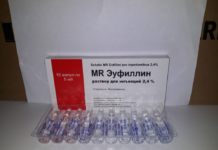The most common type of surgical intervention in gynecology is the artificial delivery of labor (cesarean section). They perform obstetric surgery when natural childbirth is impossible or dangerous for the fetus and the pregnant woman. Many women are interested in the global question, but how long does a cesarean section last, and what is expected after such an intervention?
Material Content:
Indications for Caesarean section
It will be better for the baby and the woman herself if delivery occurs naturally, but sometimes this is not possible.
There are such indications for caesarean:
- narrow pelvis of a pregnant woman;
- large fruit;
- premature discharge of water;
- multiple pregnancy;
- difficult pregnancy;
- fetal hypoxia;
- woman's heart failure;
- transverse or pelvic presentation of the fetus.
How is the operation
How the operation goes: first anesthesia is done, then the abdominal and uterine walls of the abdomen undergo transverse dissection with a scalpel, after which the newborn is removed through the incision.
Surgical intervention is of two types:
- Planned cesarean section. A woman in labor is prepared for this operation approximately 10 days before the expected date of delivery. A pregnant woman is hospitalized; her health is monitored. A day before the operation, a dropper with saline solution is placed (so the tissues are artificially filled with water), the intestines are washed in the evening. Local anesthesia is used.
- Emergency. Preparation takes place quickly, the pregnant woman’s stomach is washed with a probe, more often systemic anesthesia is done.
Local anesthesia is divided into:
- Epidural. The medicine is injected into the spinal canal in the lumbar for 12 minutes. The lower half of the body is numb. Before the woman put a partition, the woman in labor is in full consciousness. Make a cross section of the abdomen, remove the child. Narcosis of this kind does not affect blood pressure, heart function. A woman in labor quickly emerges from a narcotic state.
- Spinal. Pain medication is administered much deeper between the spinal vertebrae. The operation takes place exactly as with the previous method of pain relief.
General anesthesia is also of two types:
- Common systemic anesthesia. It is used when there is a need for an emergency procedure in the development of pathological delivery. It is also used if a local one is contraindicated or a woman in labor independently refuses a local anesthetic.
- Modification of the Stark. The uterus is opened by a cross section of the abdominal wall of the abdomen, so-called suprapubic cross section is made. The last is removed after the fetus, the incision is quickly sutured. With this method, there is no need to continue taking painkillers, the baby is applied to the chest after 2 hours. It is allowed to get out of bed after surgery after 8 hours.
The doctor can offer the woman in labor a choice of the type of anesthesia: local or general action.
It is recommended that interventions be performed under local anesthesia, since in this case the probability of adverse reactions is lower.
Duration of Surgery
Among women in labor, the question of how long the cesarean section lasts in time is relevant. On average, the duration is from 30 minutes. up to 1.5 hours. The type of pain medication plays a huge role.
The time frame is as follows:
- Local anesthesia. It takes up to 20 minutes to administer the painkiller, and 7 to 10 minutes to remove the newborn. Antiseptic treatment of soft tissues of the abdomen, suturing takes 20 - 40 minutes. Total time - 1 - 1.5 hours.
- General anesthesia. The duration of a caesarean section for the first time is 25 to 40 minutes. When repeated, it can take much longer, since the seams can interfere with the rapid dissection of the coarsened tissues of the abdomen.
- According to the Stark modification, the resolution of labor by the forced method lasts from 15 to 20 minutes. The baby is removed after 2 minutes. after the cut.
How long does the abdominal pain and discharge last?
The nature of abdominal pain, discharge and the duration of their manifestation depends on the method and quality of the operation. The more damaged during the surgical intervention of the abdominal tissues, the longer the healing period.
Discharge (lochia) is a mixture of blood, mucus and epithelial tissues. Externally resemble heavy menstrual bleeding. The absence of extraneous odors, saturated red color indicates the norm. Abundance of discharge is observed for 7 days.
A woman in labor is required to change the pads every 2 hours in order to avoid the accession of extraneous infections.
The number of Lochia for a weekly period in the total volume is approximately 0.5 liters. Breastfeeding contributes to increased blood flow due to the stimulation of uterine contractions. Abundance decreases, but discharge will be observed for 2 to 5 weeks, with a gradual decrease in quantity. From 8 - 10 days, the lochia become dark, by the end of 3 - 5 weeks they are smearing.
Postoperative recovery
After cesarean section, as well as after any surgical intervention, a woman's body must recover. The rate of recovery after surgery depends on the body's ability to self-repair. After a surgical delivery, a woman in labor returns to her usual state slowly. Departs from anesthesia within 1.5 - 2 hours. After epidural or spinal anesthesia, a woman may feel poor lower body for about 24 hours.
During the first day it is contraindicated to take food, sparkling water. Only from the second day, non-fat fermented milk products, liquid first courses and cereals are introduced into the diet, later - boiled chopped meat. After a week, you can switch to a normal diet.
The state of health in the first days after surgery may worsen, so the woman is under the supervision of doctors. Normally, a woman in labor experiences pain in the lower abdomen. If the intensity of pain increases, the location changes, a cramping pain appears, it is worth immediately informing your doctor.
In addition to the usual symptoms, the patient may experience the side effects of anesthesia for three days: headache, anxiety, irritability. This condition is sometimes accompanied by bouts of vomiting, coughing, or insomnia. Do not make sudden movements, which can cause seams to diverge. It will take more than one month to fully recover. Intimate relationships are prohibited for 40 days.
Breastfeeding contributes to the rapid healing of wounds, the restoration of the body after childbirth.
Complications after cesarean section
Factors affecting the occurrence of undesirable consequences:
- the professionalism of the doctor;
- duration of surgery;
- the quality of the suture material used;
- antibacterial therapy.
Complications are early and late.
To the first belong:
- bleeding
- hematomas;
- suppuration and inflammation of the sutures, their divergence.
The likelihood of early consequences depends largely on personal hygiene and the implementation of the advice of a doctor.
Late complications are extremely rare. The result of epidural analgesia is back pain, which can occur within six months.
Other complications:
- endometriosis;
- umbilical hernia;
- atrophy or diastasis of the abdominal muscles;
- commissures;
- ligature fistulas;
- keloid scar.
It is important to follow all the doctor's recommendations after surgery, then the risk of complications is reduced.
















